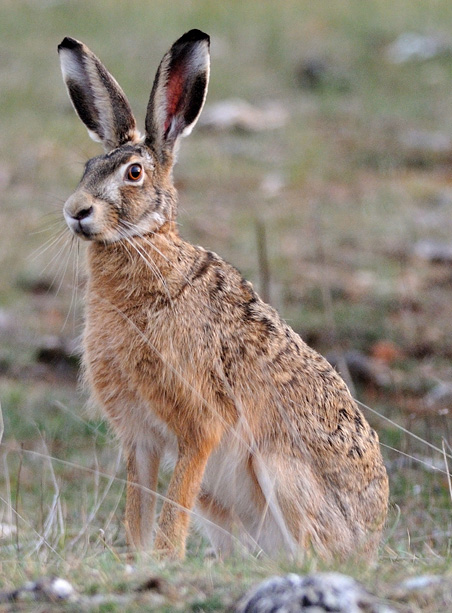Facts About European hare
The European hare, commonly known as the brown hare, is a captivating species native to Europe and parts of Asia. As one of the largest hare species, it thrives in temperate, open landscapes. These herbivores primarily feed on grasses and herbs, and must stay vigilant to evade predators such as large birds of prey, wild dogs, and cats. Their secret weapon? High-speed endurance running.
While typically nocturnal and quite elusive, European hares become more active and visible during the spring. This is when they engage in playful chases and even boxing matches. Female hares construct their nests above ground and can have several litters a year, each with up to three or four young. Despite their extensive range and moderate abundance, the European hare population has been declining in mainland Europe due to changing farming practices. Nonetheless, the IUCN lists them as of least concern.
First described in 1778, the European hare belongs to the genus Lepus. There remains some debate among scientists regarding its exact classification and its relationships with other hare species. Genetic studies have revealed a complex evolutionary history with significant genetic diversity. Historically, up to 30 subspecies have been identified, although their exact status is still under discussion.
These hares are built for speed and endurance, with various adaptations that enable them to run swiftly. They prefer open fields with some brush for shelter and adapt well to mixed farmland environments.
European hares are known for their complex behaviors, including using visual signals for communication and engaging in group feeding dynamics. They have a long breeding season, with females capable of being pregnant year-round. Their mating system is polygynous, meaning males compete fiercely for mates during the breeding season. Unfortunately, hares face high mortality rates due to predation and various diseases.
Culturally, the European hare holds a special place in folklore, literature, and art, often symbolizing fertility and springtime. They are also popular game animals, with millions hunted annually in Europe. Hare meat is considered a culinary delicacy, traditionally prepared in various ways. While their overall conservation status is of least concern, low population densities in some areas could lead to local extinctions due to inbreeding. Consequently, several countries have listed the species as "near threatened" or "threatened" on their Red Lists.

 Bolivia
Bolivia